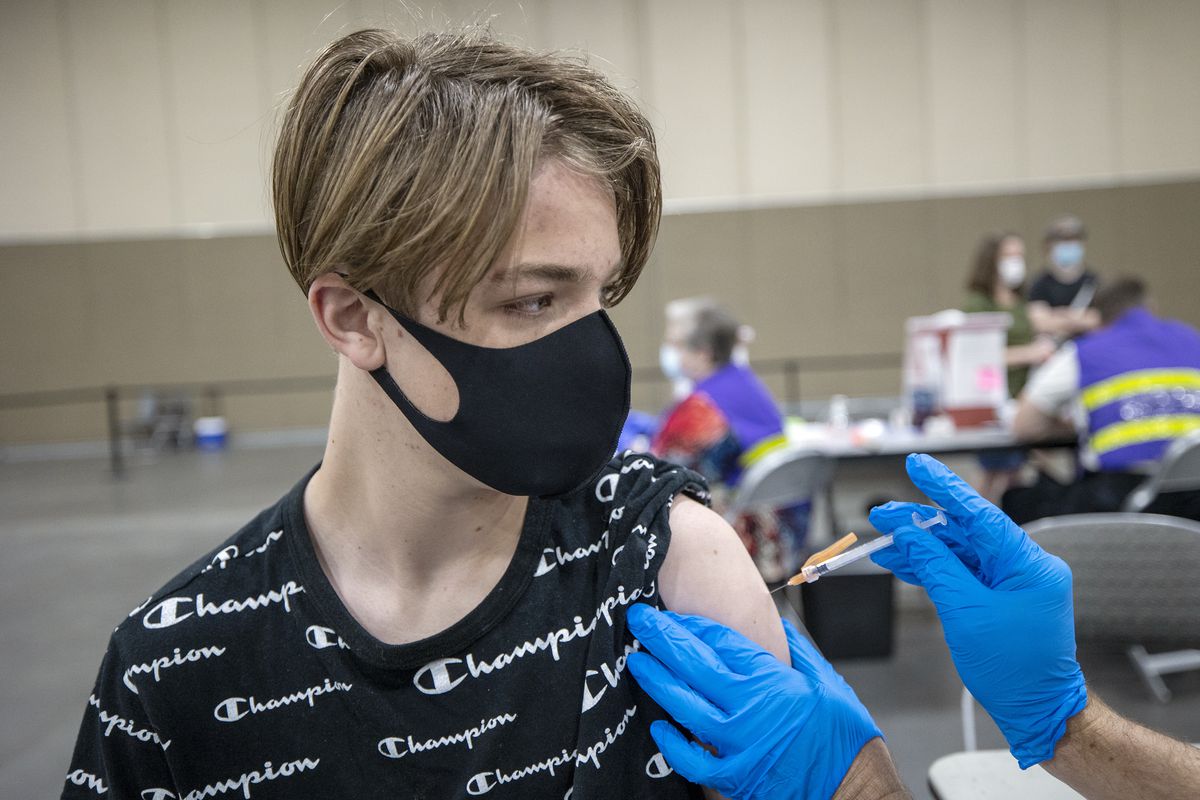PROVO, Utah – The new, more contagious COVID-19 variants from India have surfaced in Utah.
Ten cases from the variants that originated in India have been identified in the state, Utah Department of Health epidemiologist Keegan McCaffrey said Friday. More than 26 million people in India have been infected with the coronavirus and at least 290,000 have died.
The variants were brought to Utah by individuals who had traveled from India, Dr. Brandon Webb, an Intermountain Healthcare infectious diseases physician in Salt Lake City, told reporters during the region’s largest health care provider’s weekly virtual news conference on COVID-19.
McCaffrey said the cases were identified in April, through sequencing samples of positive cases by the state public health laboratory, a process that can take two weeks. Most of the India variant cases were in Salt Lake or Davis counties, he said, and linked to a specific outbreak, although there’s also some community spread.
“It’s really small numbers, and so it’s hard to read into that, but I think given that it’s been seen here in some people that haven’t traveled, it’s being picked up in other states … I think we can say that it is likely here and it is likely spreading,” McCaffrey said, adding, “we’re not seeing it really taking off yet.”
Webb said efforts are underway to “make sure our surveillance safety net is woven tightly so that we can identify when those variants do come” from India as well as other parts of the world. “Right now they’ve been very far and few between.”
He said by far, the most dominant variants in Utah are the U.K. variant from Britain, first identified in the state in January, that accounts for about 60% of cases, as well as the California variants. While those variants spread more quickly, the current vaccines available offer protection.
Webb said the vaccines’ effectiveness against the new India variants is still being studied.
“Those studies are ongoing right now. There’s a tremendous amount of attention being given to that within the scientific community. We do know that the vaccines are very effective against the strains that are currently circulating in the United States that are dominant,” he said.
The expectation, Webb said, is that like variants from South Africa and Brazil, the vaccines currently available will generate some immunity to the India variants although “it may not be as robust. But it will generate immunity. Again, the race between vaccines and variants, some immunity goes a long way.”
McCaffrey said like other variants, those from India may be more transmissible and have “some mutations that may help it evade the immune system and some treatment.” However, he said, “we do not have good evidence to think that it will make the vaccine significantly less effective.”
A May 12 report on COVID-19 variants from the Centers for Disease Control and Prevention listed four variants of the virus from India and categorized them as being of interest rather than a concern, like the U.K., Brazil and California variants. The India variants accounted for 3% of U.S. cases through May 8, the report said.
First identified in October, variants from India have been found in at least 44 countries, NBC News reported. The British government’s group of scientific advisers on COVID-19 recently warned not only are the India variants more contagious than the U.K. variant, “it is a realistic possibility that it is as much as 50% more transmissible.”
It’s too early to say whether that’s happening, McCaffrey said.
“This is likely a more contagious lineage of COVID,” he said. “It’s hard to know how that will translate. But it certainly reinforces that if you haven’t gotten vaccinated you should go get vaccinated as soon as you can, and if you haven’t gotten vaccinated yet, you should continue to wear a mask and social distance when in public.”
Both Webb and McCaffrey said the presence of the variants from India shouldn’t change the new CDC guidance saying it’s safe to go without face coverings in most situations for those who are fully vaccinated — meaning it’s been two weeks since their final dose.
Utah’s coronavirus.utah.gov website only tracks variants considered a concern by the CDC. According to the site, there have been 1,383 U.K. variant cases; 520 of one California variant and 141 of another from the Golden State; 25 of the Brazil variant; and 12 of the South Africa variant.
Friday, the state health department reported 300 new COVID-19 cases and 10 additional deaths from the virus, including nine that occurred before April 21. There have been a total of 403,984 cases of the coronavirus in Utah since the start of the pandemic in March 2020.
A total of 2,482,804 vaccine doses have been administered in Utah, a daily increase of 18,716.
The rolling seven-day average for positive tests is 284 per day, and, since Thursday, 4,321 Utahns have been tested for the virus and a total of 8,851 tests conducted. The rolling seven-day average for percent positivity of tests is 3.4% when all results are included and 6.4% when multiple tests by an individual are excluded.
Currently, 136 people are hospitalized in Utah with COVID-19. The state’s death toll now stands at 2,289, with the 10 additional deaths reported Friday. They are:
- A Salt Lake County woman between 65 and 84 who was a long-term care facility resident.
- A Salt Lake County woman older than 85 who was not hospitalized when she died.
- Two Salt Lake County women older than 85 who were long-term care facility residents.
- A Salt Lake County woman between 65 and 84 who was hospitalized at time of death.
- Two Salt Lake County men between 65 and 84 who were hospitalized at time of death.
- A Salt Lake County man older than 85 who was hospitalized at time of death.
- A Salt Lake County man older than 85 who was not hospitalized when he died.
- A Utah County man between 65-84 who was hospitalized at time of death.






